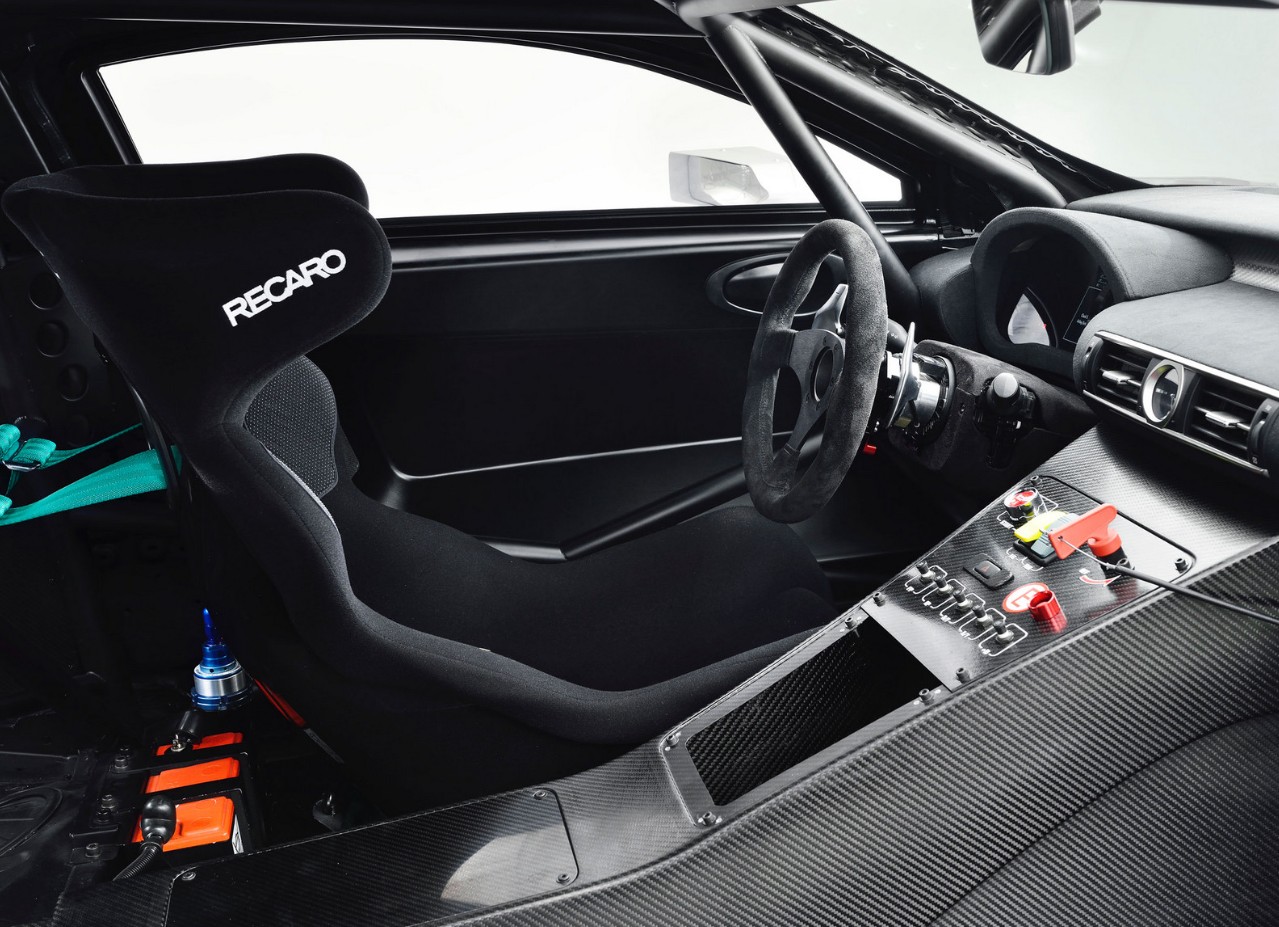2026 Lexus RC F GT3 Racing Specs, Price, Interior – The 2026 Lexus RC F GT3 Racing car isn’t just an evolution—it’s a full-fledged recalibration of Lexus’s motorsport ambitions. Built to FIA GT3 regulations, this model arrives with a sharper aerodynamic philosophy, lighter composite construction, and dramatically reworked mechanical systems. Lexus engineers worked closely with racing teams across Super GT and IMSA to deliver a chassis and bodywork combination that strikes the perfect balance between raw aggression and aerodynamic finesse. Every surface, scoop, and slit has a purpose, and those purposes are all about cutting lap times. 2026 Lexus RC F GT3 Racing Specs
2026 Lexus RC F GT3 Racing Redesign and Update Plan
Exterior & Interior
On the outside, the 2026 RC F GT3 is all about aerodynamic performance. The massive fixed rear wing is fully adjustable and now mounted using lightweight forged uprights for optimal rigidity. New air curtains at the front corners, alongside vented front fenders and an upgraded hood extractor system, keep cooling and drag in check during race conditions. The side skirts and rear diffuser have been reshaped based on computational fluid dynamics simulations, maximizing ground effect while preserving high-speed stability.
In terms of visibility and structure, the windshield and side windows are made from polycarbonate to shed more weight, while still complying with FIA safety standards. The race-spec LED lighting package ensures visibility during endurance events like the 24 Hours of Spa. Quick-release body panels and front/rear bumpers enable faster pit service times, with redesigned tow hooks and jack points integrated into the structure for optimal accessibility. Livery customization options are expanded for teams, with areas reserved for sponsor placements without compromising airflow zones.
Inside the cockpit, everything is stripped down to essentials—no infotainment screens, no comfort features—just pure, focused racing utility. The carbon fiber seat is FIA-homologated with six-point harnesses, and the dashboard is dominated by a digital MoTeC data logger and multifunction racing display. The steering wheel, detachable and covered in Alcantara, offers real-time control over ABS, traction, brake bias, and engine mapping. Secondary functions such as pit-lane speed limiter and radio comms are accessible via rotary dials and backlit switches. Every detail inside prioritizes fast driver feedback and maximum situational awareness.
Weight reduction is central to the 2026 update. The body panels are now composed almost entirely of carbon-fiber reinforced plastic (CFRP), while the roof, hood, and doors have been reworked with lighter materials and better heat tolerance. Suspension geometry has been optimized using real-world telemetry from competitive circuits, and the new front splitter and rear diffuser have been extended and reshaped to increase downforce across all speed ranges. Airflow underneath the car is fully managed to reduce lift and increase stability, especially in high-speed cornering scenarios.
Dimensionally, the new RC F GT3 maintains a wide, planted stance but with adjusted track width for better cornering response. The new iteration also rides lower to the ground with improved rake, enhancing aerodynamic balance between front and rear axles. Lexus has overhauled every panel of this car with a racing-first mindset, making it not only more competitive but also more predictable in behavior. This isn’t a road car in disguise — it’s a focused machine honed for international GT3 dominance.
2026 Lexus RC F GT3 Racing Specs
Engine & Performance
Under the hood, the 2026 RC F GT3 still relies on a naturally aspirated 5.4-liter V8, but this engine is far from stock. Developed off the Lexus 2UR-GSE block, the motor has undergone extensive refinement with race-spec pistons, forged internals, and custom headers optimized for backpressure and balance. Power output is regulated by FIA to around 500–550 horsepower, depending on balance of performance (BoP) settings, but the true beauty lies in its delivery—linear, predictable, and thunderous. Torque distribution has been improved, providing superior mid-exit power during cornering.
The powertrain pairs with a rear-mounted Xtrac six-speed sequential gearbox, actuated via paddle shifters with a pneumatic system. The gearbox is fully interchangeable trackside, aiding in serviceability during endurance events. A triple-plate carbon clutch handles power transition, and the entire drivetrain is designed to withstand extreme heat and prolonged racing conditions. Radiator placement and oil coolers have been relocated and enlarged to cope with hotter engine demands, especially in hotter circuits like Bahrain and Sepang.
Performance figures are regulated by class, but the new RC F GT3 accelerates from 0 to 60 mph in approximately 3.3 seconds and tops out near 180 mph, depending on gearing and drag configuration. What makes this car competitive isn’t just its straight-line pace, but the way it handles mid-speed turns, braking zones, and transition corners. Lexus engineers spent hundreds of hours fine-tuning damper settings, sway bar rigidity, and tire wear curves to keep this car consistent lap after lap, even in changing weather conditions. 2026 Lexus RC F GT3 Racing Specs
2026 Lexus RC F GT3 Racing Fuel Economy
Fuel economy isn’t a selling point in GT3, but efficiency still matters during endurance events. The 2026 RC F GT3 has been calibrated for maximum range per fuel stint, aided by electronic fuel maps and lean burn modes activated during safety car periods or strategic long-run setups. The V8 has proven to be surprisingly fuel-stable compared to turbocharged alternatives, offering better thermal consistency and reduced pit stop frequency—key advantages in 6-hour+ formats. The tank capacity remains fixed at 120 liters per FIA regs, but fuel distribution and flow rate improvements help Lexus maintain competitive stint durations.
2026 Lexus RC F GT3 Racing Safety Features
Safety is non-negotiable in GT3, and the 2026 Lexus RC F GT3 is built to exceed current FIA standards. The chassis integrates a full FIA-approved roll cage constructed from high-tensile steel, with reinforced side-impact bars and extended crush zones. The carbon seat structure is designed to work in tandem with the Hans device, head nets, and multi-point restraint system to protect the driver during severe impacts or rollovers. Structural reinforcements in the front crashbox and rear bulkhead ensure energy dissipation under frontal and rear-end collisions.
Lexus has also equipped the RC F GT3 with an onboard fire suppression system featuring multi-zone discharge nozzles covering both the engine bay and cockpit. A digital safety shutoff switch is mounted both inside and outside the vehicle, allowing marshals or pit crews to instantly disable all electronic systems in the event of an incident. The polycarbonate windshield is treated with anti-shatter coating, while window nets are designed for quick egress but meet tensile strength standards.
New for 2026 is an integrated biometric monitoring system embedded in the seat, capable of tracking driver heart rate, hydration levels, and G-force loads. This data can be relayed to the pit wall and used to adjust driver rotations or issue emergency alerts. In an era where endurance races can last 6, 12, or 24 hours, this level of in-cabin monitoring offers an extra layer of driver health awareness. For Lexus, safety isn’t just compliance—it’s competitive advantage built into every component.
2026 Lexus RC F GT3 Racing Release Date & Price
Pricing for the 2026 RC F GT3 is expected to start at approximately $530,000 USD, depending on configuration, spares package, and telemetry options. Lexus is offering a turn-key customer support program that includes technical consulting, trackside support, and factory-level parts availability throughout the racing season. Delivery slots are limited, with initial production focused on existing partner teams in Super GT, IMSA, and SRO series. New clients will be evaluated through Lexus Motorsport’s dealer-based performance program, which now includes track licensing assistance and private testing.
The official global reveal is scheduled for the 2025 Tokyo Auto Salon, with customer deliveries starting Q1 2026. Homologation is already underway with SRO and JAF for use across global GT3 series, including the Nürburgring 24 Hours, GT World Challenge, and Le Mans GT3 class debut. Lexus plans to campaign the car through select factory-backed teams while expanding its customer racing program in Europe and North America. This isn’t a concept. It’s a race weapon, ready for grid positions and podiums. 2026 Lexus RC F GT3 Racing Specs


